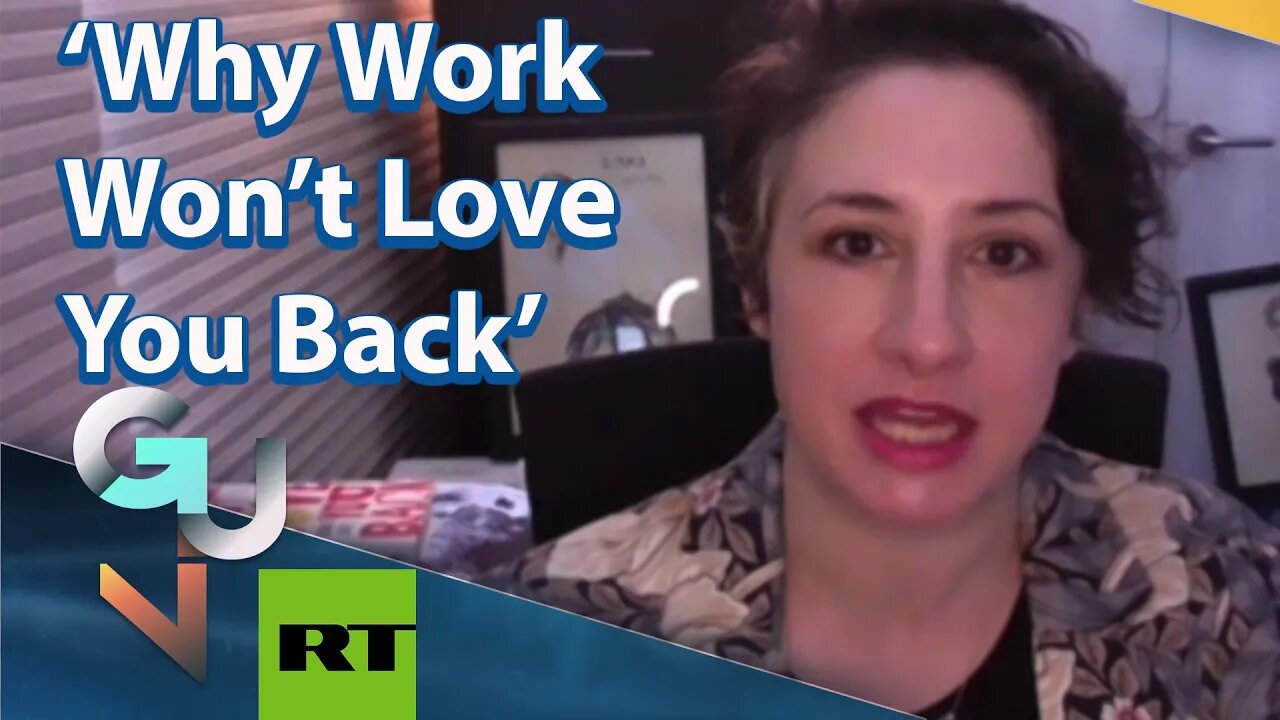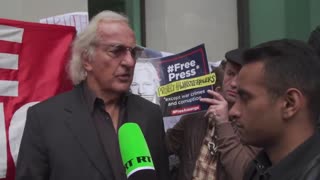Premium Only Content

ARCHIVE: Re-thinking Work Under Capitalism: Are We Devoting Too Much To Work? (Sarah Jaffe)
FIRST AIRED: 01/02/2021. We speak to Sarah Jaffe, Author of 'Why Work Won't Love You Back'. She discusses how Coronavirus has helped debunk the claim that work is fulfilling and wonderful, the issue of no pay for women for household work, the reason why so many teachers are traditionally women, why the charity system 'justifies the way things are' and much more!
We contacted the HM Treasury about the allegations in this show and a spokesperson said: “As we noted back in the autumn, figures published on 28th January confirm that take-up of Eat Out to Help Out does not correlate with incidence of Covid regionally – and indeed where it does the relationship is negative.”
Background
As we have done throughout the pandemic, we have worked with creativity and at pace to support individuals and businesses.
We designed The Eat Out to Help Out scheme to protect 2 million jobs in hospitality, an industry whose employees are at high risk of long-term unemployment in the event of redundancy.
It protected jobs across the UK by bringing back 400,000 people from furlough whilst safely restoring consumer confidence.
On 28 January HMRC published a geographical breakdown of EOHO measuring number of outlets, meals claims and total value of discounts claimed.
If you correlate meals claimed per head of population with new cases of Covid-19 recorded during September and October (data from gov.uk dashboard), there is little evidence to support the claim that EOHO directly led to an increase in Covid-19 cases on a UK-wide level.
Local take-up of EOHO was not positively correlated with COVID rates between August and October in any English region or country. When comparing the total number of new COVID cases (between 3 Aug and 1 Nov) per 100k population, and the relative EOHO uptake (meals per population), the correlation is only significant in 2 out of 12 countries/regions (Wales and Yorkshire & The Humber), and the correlation is negative in both examples.
The EOHO scheme began on 03/08/20 and ended on 31/08/20. At the end of the scheme, there is a lack of convincing evidence that take-up of the scheme has led to an increased amount of new cases, based on specimens obtained in week 36 (31/08/20).
As there appears to be a lack of compelling evidence for a UK-wide correlation between EOHO and COVID, there are local authorities with very high EOHO take-up and relatively low levels of new COVID cases, as well as local authorities with high levels of new COVID cases and low take-up of the EOHO scheme.
To perform this analysis yourself, request the following in the gov.uk dashboard:
Region type: lower-tier local authorities
Time span: Full archive (year-to-date)
Variables: “newCasesBySpecimenDate”
To mitigate the delay between exposure of Covid-19 and onset of symptoms we use this variable which is the date the specimen was obtained rather than positive test was published.
FOLLOW Going Underground http://twitter.com/GUnderground_TV
FOLLOW Afshin Rattansi http://twitter.com/AfshinRattansi
SUBSCRIBE on Telegram: https://t.co/xDEHJ0c6WW
-
 3:09
3:09
Going Underground Episode Archive
1 year agoJohn Pilger (1939-2023): Julian Assange Extradition Case is a WAR ON JOURNALISM!
1.2K3 -
 2:58:32
2:58:32
IsaiahLCarter
6 hours agoAPOSTATE RADIO EPISODE 012: Closing Down and Proceeding on Signal, with Trammell Thompson
40.4K8 -
 11:09
11:09
Forrest Galante
4 hours agoIs The Mammoth REALLY Coming Back From Extinction?
20.3K31 -
 1:00:52
1:00:52
Mike Rowe
6 days agoThe Sun Never Sets On Gene Simmons | #432 | The Way I Heard It
65.7K120 -
 1:58:31
1:58:31
Adam Carolla
15 hours ago $17.34 earnedJay Leno Does What Modern Politics Won’t: Taking Care of Family Without a Press Conference
51.8K14 -
 5:28:29
5:28:29
Akademiks
6 hours agoDay 2/30. Smurk on Stream?? 50 cent keep going at Big Meech. Kendrick to Buy Kanye West Catalog?
74.6K2 -
 1:35:28
1:35:28
BlackDiamondGunsandGear
10 hours agoThe TRUMP SLUMP?
33.2K6 -
 3:13:59
3:13:59
SilverFox
5 hours ago🔴LIVE - OBLIVION IS BETTER THAN SKYRIM NOW
31.5K1 -
 DVR
DVR
SpartakusLIVE
9 hours agoDuos w/ StevieT || Trios or Quads Later?!
27K1 -
 7:19:12
7:19:12
OhHiMark1776
10 hours ago🟢04-27-25 ||||| Halo Multiplayer Rumble: No. 13 ||||| Halo MCC (2019)
82.7K